Thoughts on Home Air Filtering
(With thanks to those commenting on the Air Purifier thread). I'm thinking ahead to future fire seasons in the PNW, wondering about better filtration of very fine particulate matter, questioning the HVAC guy who came out, and complaining a bit. All thoughts appreciated.
1650sf, 1915ish bungalow with a 4 year old Mitsubishi ducted heat pump system and new windows, insulation, etc. so the house is (relatively) tight. We like the heat pump a lot for heating and cooling, but it has a small 14x20x1 filter and I've kept using MERV 8 filters which is what we started with. The air intake is on the bottom and there's not a ton of space or height in the utility room, so the filter is set at an angle in a sheet metal box the installer created.
I asked the installer to send someone out to look at they system and discuss better filtration of forest fire tiny particulate matter and NOT bacteria, viruses, etc. He prepared a bid for an Aerus Air Purifier, saying it's just what we need. Googling--and the air purifier thread linked above--shows that's basically nonsense. At best, a purifier might kill things I'm not worried about, but I haven't found any legitimate information on filtering, how it works, or where the device would put any particles that are filtered from the air. So, onward.
I called the guy and told him I don't want a purifier, and he said I could just put in a higher MERV filter. Fine, but I asked about pressure loss, reasoning that creating more blockage in the filter to remove more stuff will make it harder to move air through. He said the Mitsubishi will simply adjust for that, denying that it would be louder or blow harder or use more electricity or run more. Unless Mitsubishi can adjust the laws of physics, I don't see how that's possible.
What I think I want is a larger media cabinet that'll hold a big, thick, denser filter (at least MERV 13, based on this helpful source) with enough surface area for good airflow. Does that make sense? Is this something that companies will retrofit? Can it sit next to the air handler and still direct airflow into the unit, or would I have to chip out the slab underneath (trying to upload a photo but no luck) since there's only about 14" between the basement slab and the bottom of the air handler, which where the current sheetmetal filter box is.
If you've read this far, thank you, and apologies for being so wordy. Am I on the right path?
Comments (50)
Austin Air Companie
3 years agoYou are fighting a bigger battle than you think when you're talking about a centralized return for a HVAC system.
The air in your home has to take flight to get there. From that point, you have to restrict the air to get as much dust as you can.
Is there anything that is perfect. No. Because the more you restrict to catch the dust, the more you restrict the air as well. Especially in a single centralized return.
Variances: Why a centralized return with a beefed up filter? Most homes in the USA are larger form factor. The more efficient the home. So you may have a 2500 sq ft home with a 2.5 Ton air conditioner. It saves a lot in operation costs but it's poor on filtration.
Back in the 90's maybe early 2000's in some locations (southern climate) a 2500 sq ft home as an example would have been fitted with a 5 ton air conditioner as an example. Buildings were getting tight, but no where they are today.
The air outside the envelope of the return: say anywhere from about 50 ft or so the HVAC system is likely not filtering much if any of that air. How could it with a single centralized return?
The alternative may not work: Multiple returns to filter more air. If one return is good --- two returns is better. Reduce the drag on that filter helps it retain more dust and dirt. If you've ever seen a failed filter (Like I have) the more a filter gets dirty, the more that dirt err dust seeps thru.
Another alternative is passive filtration. Instead of in line filtration it is placed in parallel to the HVAC system. It is another system with in a system if you will.
The con with multiple returns: cost to install them. For some homes this may be quite the challenge not to mention costly.
Passive filtration: not what I would call cheap either as maintenance costs for these systems are higher. If you don't do the maintenance after a year or so... It won't do anything.
It won't do anything rebuttal: If you don't change the filter you have now, it won't do anything either.mike_home
3 years agoA variable speed blower is supposed to maintain constant airflow. Therefore if you put in a more restrictive filter or the filter becomes dirty, the motor should increase the revolutions per minute to maintain this airflow. It will create more noise and use more electricity.
A 4inch filter will have less static resistance than a 1 inch. A MERV 13 filter is more restrictive than a MERV 8. You can reduce the resistance by installing a bigger filter. A good rule of thumb is to have one square inch of filter for every two CFM of air flow. You could have the return modified to accept a bigger filter. I suggest raising the equipment rather than excavating the basement slab if you need more clearance.
Related Discussions
Trouble with Briggs Quantum Air Filter Gaskets
Q
Comments (4)Well, I got it.......... I used 2 gasketsand soaked them in carb cleaner too. Evidently I was tightening the screws too tight. I used some loc-tite on the screws, tightened them in until I could see fuel coming up when priming. It took very little tightening of the screws to make it prime. Learn something new every day.............. Thanks Much for all the replies and the help. Steve...See MoreAir Filter: What Does It Filter? Full Dust but Not on the Filter?
Q
Comments (5)We see this problem all the time and more than likely your Return Duct leaking or sucking in the dust, since the supply air is blowing air OUT, your vents, and the return duct sucks in and I'd bet it's the area directly behind the filter grille. Is the wall cavity above and below the grille covered? also are the panning edges and headers sealed with caulk or tape? If they're taped, then that could be your problem, tape doesn't last like caulking....See MoreA/C Air Filter Purification
Q
Comments (3)Am am investigating the follow Whole House HEPA Filtration System. When installed is does not restrict the air flow across the heating or coiling fins/coils. This is called a bypass filter. There are filters that need to be changed on a regular bases. The equipment cost is about 400.00 and installed depends of if U have and electrical outlet available and than hang it, and connect the ductwork. This "maybe" a DIY project for somepeople, others get a A/C to install it. Its about a 1-2 job. The product that I am looking intois a FanTech three different models. DM3000, CM3000, and CM3000 Note this is a certifided HEPA System Not all filtration filters or system all HEPA even when the manufacture tells U they are. Be careful in that respect....See MoreFilter question/thoughts
Q
Comments (10)It sounds as if you're using a filter/grille in the ceiling with 1" media filters - the 1" filters are a restriction, because of insufficient airflow, due to too little media - a good solution, and the one I use is the Honeywell "FC40" series media filters. These 4" media filters have a one inch lip and retrofit into your standard filter-grille. The thicker media allows greater airflow without significant restriction, and they can last up to a year according to honeywell. The 4" filters in my size have a pressure drop at the filter of about .15", which is similar to the spun filters, but the honeywell units have a merv 10 rating. For under $40 a copy,if you look a little bit - it's a no brainer. Good luck Here is a link that might be useful: Here's where I get mine... (20...See MoreCharles Ross Homes
3 years agoDesigning a filtration system which filters smoke particles and which is properly integrated with your existing HVAC system isn't as simple as bolting on a higher MERV filter. It needs to be designed so it works as part of a system and doesn't require frequent maintenance. You'll be well served to consult with a HVAC designer/engineer who can take a detailed look at your existing system and suggest alternatives to achieve your objectives. I suggest you consider both mechanical as well as electronic filtration.
AvatarWalt
Original Author3 years agoThanks for the replies. I feel like my thinking has been on the right track: wanting a good HVAC person to discuss adding a higher MERV filter with a bigger surface area, which should equal out to better particle capture while maintaining good airflow.
We have an existing house and ducting and a small mechanical room, so I hoped the guy who came out would know his stuff and be helpful about telling me what might fit or work. An air scrubber seemed like the wrong path for addressing smoke particles, and his claim that the air handler will adjust to a higher MERV filter without actually increasing the blower speed seemed impossible, so I didn't have much faith in what he was telling me. He also said that electronic filters are useless unless cleaned weekly, and I have no idea whether to believe that either.
We do have four returns pulling air to the filter box (central hallway, living room, one of the two bedrooms, and basement) which is good, but the tangle of ducting in the small utility room is a challenge. The filter box uses all 14" below the air handler, and the area from the top of the unit to the rafters is ducting.
This last summer I taped a couple of MERV 13 filters to a box fan which helped with smoke (and moving air around), but it's noisy and cumbersome. I wonder if an attic fan, filter and simple ducting would do the trick in a rudimentary way and if there are any HVAC people who'll understand what I want and know the answers.
Or maybe I'm just deep in pandemic overthinking . . .Charles Ross Homes
3 years agoIf space limits the options for integrating additional filtration equipment into your central HVAC system, you might consider one or more portable air cleaners. The good folks over at the EPA have a variety of resources to get you started. Here's a link to one:
https://www.epa.gov/indoor-air-quality-iaq/air-cleaners-and-air-filters-home
opaone
3 years agoOverall I think you're heading in the right direction. A few thoughts...
- Unless you completely stripped either the inside (lath & plaster?) or outside of your home to fully expose all of the studs and then sealed from there, it is not tight. Windows & Insulation are good but there's a lot more that has to be done in older homes. You could get a blower door test to find out.
- One way to deal with the lack of tightness from an air pollution standpoint is to keep the inside slightly positive pressure to the outside. One or two pressure differential switches and small variable speed MUA can help you achieve that. Be careful to not go too high pressure though and understand the pressure differences between windward and leeward sides of your house (why 2 PD switches are good).
- Yes, MERV 13. As mentioned above, increased surface area can help to overcome pressure losses. @mike_home's idea for doing them in each of the 4 returns seems like a good one.
- Using your HVAC system will be more effective than in room circulating filters though these can still help.
- Get a monitor or 2. uRad A3 is probably the best with IQAir second best. Avoid Foobot.
- In my experience the averaged HVAC person in the U.S. is about 30 years behind in their knowledge of Indoor Air Quality, Energy and many other areas of HVAC. So yeah, you need to do your own research. Most can still help though with stuff like measuring airflows to make sure that you're getting proper circulation and proper velocity for your filters, etc.
kevin9408
3 years agolast modified: 3 years agoKeep it simple if you can. I have a Dwyer 0 to .5 in w.c. differential pressure gauge permanently installed on my air handler and it was $80. When the air filter needs to be replaced I will know without guessing or checking, I just look at the gauge. My Air handler has a maximum static pressure of 0.5 in. w.c. and it's stated on it's name plate and your Mitsubishi should have one stated.
Install a gauge and put in the Merv 13 filter, if it doesn't exceed the static pressure stated on the name plate run the Merv 13 until the gauge hits your units static pressure rating. You may need to change the filter more often but let the gauge tell you when, and if the Merv 13 filter is too restrictive the gauge will still help you monitor your filter and maybe a Merv 11 will work, but bottom line is any guessing or wondering is removed from the equation.
I go to the utility room everyday to get a Dr. Pepper from a extra frig so I can look at the gauge as I walk by it. If you don't visit the utility room often there are Differential gauges with alarms also. I see people on here all the time crying how a higher Merv filter will wreck your furnace, but how do they know without monitoring the pressure drop. A merv 8 has a drop of about 0.12 and a Merv 13 is around 0.25, and all other sources of pressure drop comes from the design of the duct work.
Some time over the last 10 decades someone installed duct work and it wasn't for your 3 year old Mitsubishi in a house with new windows and insulation. You really don't know what pressure drop you have unless the installer checked it before and after installation, but a gauge will tell you. Install the gauge, check the pressure drop without a air filter, this is your total pressure drop of the duct work. Then install the Merv 8 and compare it to the units listed static pressure. There may be room to go with a higher Merv filter but on the flip side the Merv 8 may also be too restrictive and YOU WILL WRECK your furnace. So drop it to a Merv 4.
seagreen3
3 years agoI second the portable air filter route. I’m in the PNW too and run 2 large HEPAs during smokey periods. I also run the AC with a MERV 8 to keep the air cool and circulating. That’s kept us comfortable.
Charles Ross Homes
3 years agoNot sure what happened, but it appears like a number of posts on this thread got deleted.
For the record, I don't recommend whole-house ventilation fans-- except for chicken houses and cow barns. Whole-house fans rely on windows to be open or risk depressurizing a home. Depending on climate zone, depressurizing a home can draw moisture into wall cavities with the potential for condensation and attendant problems.
The over-arching design criterion for residential HVAC systems is to control the indoor environment. A whole-house vent fan falls short of that design objective. But don't take my word on it, have a look at what taxpayer-funded agencies like EPA and DOE have to say on the topic:https://www.energy.gov/energysaver/weatherize/ventilation/whole-house-ventilation
opaone
3 years agolast modified: 3 years ago"Not sure what happened, but it appears like a number of posts on this thread got deleted."
I think you're confusing this thread and the guy who wants his range hood blower to do double duty with whole house exhaust.
"The over-arching design criterion for residential HVAC systems is to control the indoor environment."
Bad criteria. Doing this effectively and maintaining good indoor air quality (CO2 below 550-700ppm, low/no VOCs, low PMx.x) requires quite large ventilation systems (well beyond current ASHRAE standards) and even with current ASHRAE standards is a huge unnecessary waste of energy and money.
Quite often (depending on outdoor conditions) better indoor air quality is achieved as well as comfortable temp/RH by opening windows or opening windows and using a whole house fan. Better IAQ, much less energy used, much less cost of energy used.
"A whole-house vent fan falls short of that design objective."
But that's a misguided objective. A whole house fan provides much better and healthier indoor air quality and does so with less than 1/10th the energy (and cost of that energy).
Charles Ross Homes
3 years agoHVAC systems are, by definition, designed to control the indoor environment. The "V" in HVAC stands for ventilation. Provided you meet code requirements, you can choose whatever objective(s) or standards you'd like to design for. Don't like ASHRAE? No problem. Pick whatever you like.
The problem with exhaust ventilation systems like whole-house fans is that they depressurize the home--that's how they induce air flow. There is no control over air temperature or humidity or whatever outdoor pollutants are drawn into the home. You get what you get. And you introduce the possibility of back-drafting.
Like the "H" and "AC" parts of an HVAC system, ventilation systems need to consider both the specifics of the home and the climate. A whole-house fan might be suitable for dry climates, but it wouldn't be appropriate in a humid or mixed-humid climate. They also are operated seasonally (unless you run yours in the winter with the windows open) so the benefits they provide are limited to use periods. A better strategy is a controlled system that provides continuous fresh air ventilation like an ERV or an HRV.AvatarWalt
Original Author3 years agoComments are giving me more interesting things to consider and learn about, though we do seem to have cross-pollinated from the range hood/whole house fan thread. Thoughts/questions in no particular order:
Kevin9408, how did you install the pressure monitor? Is it in the air handler or the ductwork? I'm not sure that I'm comfortable poking holes in the air handler, but I definitely like the idea of getting realtime information on what's happening if, for example, I switch out the MERV8 for a MERV13. The label on the Mitsubishi lists design pressures as "4.15 MPa / 601 PSIG Hi Side; 2.21 MPa / 330 PSIG Lo Side." Does this mean that as long as the pressure drop is no more than 1.94 MPa or 281 PSIG I'm within the unit's operating parameters?
Even if a MERV 13 filter "works" in terms of not damaging the air handler, it'll definitely let less air through than I am with the MERV8, so I'd seemingly get better filtration but less air circulation. I'm not sure how that interplay would pan out in terms of keeping the house free from small particulate matter in fire season, which is my goal in this whole rumination.
Along that line, I wonder if there's a way to compare the flow-through (for lack of a better term--or is that the 'pressure drop'?) of a 20x14x1 MERV 8 filter vs, say, a 25x20x5 MERV13. Maybe a smaller MERV 13 would work to give me the airflow that I have now and ducting and filter box for that would fit into my available space. There's basically 2 feet from floor to ceiling open next to the air handler. (I'm reading things like THIS now. My head is spinning.)
I don't understand how one would put filters in the returns. Ours aren't uniform in size, so is there MERV 13 material that can be cut and framed?
Opaone, you're right that the house is definitely not "tight," just tighter than it was with creaky old 1950s replacement windows and doors, etc. I'm sure the ducting for the bathroom fans, dropdown attic stairs, electrical outlets, MUA and range hood, etc. are all leaky. That makes the notion of positive pressure interesting. I'm only really worried about this during fire season, so if one could turn that on when smoke is an issue and bring in MERV13 or higher filtered air, use the regular HVAC for air conditioning, and maybe a portable air filter or two it might work. I suppose I'd want to have a blower door test to see how much incoming air it would take to keep the pressure higher--the PNW isn't usually super hot in summer, but blowing warm air in all the time is counterproductive to air conditioning.
Is there reading you'd recommend to learn more about too-high pressure differential and the benefit of 2 switches?
An air monitor is a good idea too. Why do you recommend the ones that you do, Opaone, vs. say the two that The Wirecutter likes or others?
Further rabbit hole reading ahead . . . Happy Holidays to all.opaone
3 years agolast modified: 3 years agoThe IQAir is possibly one of the most tested & proved of consumer grade AQM's. It is fairly accurate (for its cost 'fairly' is good) and consistent for both CO2 and PMx which are both critical to track. The A3 (as well as the Air Quality Egg, not to be confused with various other 'egg' AQM's) comes from a good lineage - the folks who developed it are known and respected within the industry - and so far has proven quite accurate.
Some other AQM's, such as the Kaiterra Laser Egg+ may be just as good as these but I've not seen enough data on them to base a recommendation. The M10 does not have CO2 so I'd not recommend it.
Foobot looked OK in lab tests but was found to be sensitive to light so is extremely inaccurate except in darker environments and does not have a CO2 sensor (and they were initially misleading about their CO2 capabilities). Awair got off to a rough start with a lot of accuracy problems which kind of squandered people's trust. They're better now but it will take a while to build trust back up.
FWIW, we currently have a number of IQAirs, A3's and other AQM's as well as a GasLab 505 that are constantly being monitored. The IQAirs and A3's are proving solid and are fairly consistent w/ the 505.
Something you might be interested in: https://www.mdpi.com/1424-8220/20/13/3683/htm
Add: Awair are doing much better with accuracy on their newer units. I think there's just a bit of distrust of them after their earlier issues.
mike_home
3 years ago"I don't understand how one would put filters in the returns. Ours aren't uniform in size, so is there MERV 13 material that can be cut and framed?"
Your house was built with the filter being at the furnace and not the returns. This is why the return don't follow standard filter sizes. I think it would be better if you built frames what can hold the filter and were sized to accept a common filter size. Measure all the return and see how much more filter area you could accommodate using that strategy.
how did you install the pressure monitor? Is it in the air handler or the ductwork? I'm not sure that I'm comfortable poking holes in the air handler,
You can buy a static pressure meter on Amazon. There are several choices depending how much you want to spend. You don't need a precision meter or one that has to be rugged to be carried in a tool bag very day. You will have to make a small hole in the return which can can then sealed.kevin9408
3 years agoIt will say STATIC PRESSURE. What you listed ""4.15 MPa / 601 PSIG Hi Side; 2.21 MPa / 330 PSIG Lo Side." is the refrigerant pressures for the heat pump.
What is the model number of the air handler (blower unit in the house)? Anyway putting two small holes in for a gauge is not a big deal, not even a tiny deal and my 90 year old mother could do it, seriously. Another cool thing you can do with the gauge is check the house pressure. Just temporarily unplug the rubber tubes from the air handler and stick on of the tubes outside. A slightly positive house pressure will keep smoke from coming in the house, a negative house pressure will suck in the smoke like a chain smoker.
If the pressure is equal or negative you can slightly pressurize the house with a small fan with a MERV 20 filter and keep the smoke out. No more than 0.005 inches of water column (1.2442 pascal or 0.00018 psi) will do it. If you do install a gauge you will also earn the right to brag to coworkers and neighbors how handy you are, and using technical words like pascal and Negative and positive pressure will add to the amazement by others. Good luck.
AvatarWalt
Original Author3 years agoThanks again for the replies. Mike_home, filter boxes would be a challenge given the location of a couple of the returns (living room baseboard area and hallway floor, for example) and I'd guess if they weren't all tightly filtered, the air would flow through the path of least resistance.
Thanks for the information on monitors Opaone, as well as the article you linked. Having very little background in science/math, this is rather over my head, but I'm trying to at least get general ideas, and the articles in Notes 13 and 14 seem relevant. I've also found the Energy Vanguard blog useful, and relatively layperson friendly.
I think I'm back where I started, however: I'd like to find an HVAC design/consult person to look at my filter and my ducts in my house with my layout and use actual measurements to tell me if a MERV 13 filter would provide enough air exchange for safe breathing in fire season. If not, will a bigger filter box fit in the available space and/or is filtered positive air pressure viable.
Onward. :)AvatarWalt
Original Author3 years agolast modified: 3 years agoKevin, I missed your post while I was typing mine. Label doesn't say Static Pressure (but it does list the model number).

Would I just poke a hole in the filter box on either side of the diagonal filter door (airflow is left --> right in the photo) to attach a gauge and measure the pressure difference?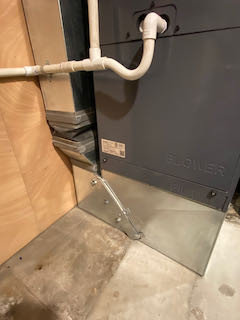
There's only 14" between the slab and the bottom of the air handler, which I'm told is why they put the (small, MERV 8) filter in at a slant. The door is around on the left side in the photo below. If the return ducting could be moved to accommodate a larger filter box in the open area next to the unit, that was my original thought. And I'm seriously intrigued by your positive pressure fan plus MERV 20 filter, Kevin (though after watching videos today I'll want to throw in "pitot tube" when I'm talking about this too :) ). Constant pressure of very clean air plus circulation by the air handler through MERV 13 seems great.
Austin Air Companie
3 years agoHere's another note: Filters on cigarettes don't prevent much in terms of smoke inhalation.
There's a warning on every box, from the surgeon general.mike_home
3 years agoI found the PVA-A30 Installation manual. It says you can set the static pressure from the Mitsubishi controller. Have you looked into this? If the air handler has a variable speed motor and the controller is monitoring the static pressure, then the blower speed will increase to accommodate the MERV 13 filter. It will cost you more money in electricity and perhaps create a little more noise, but it don't think it should be a big concern.
What you could do is use the MERV 13 filter during the fire season only. I also think you will need to run the blower continuously if your goal is to improve the air quality in the house. Relying on the air handler cycling on and off is not going to be enough of a run time to change the air quality in my opinion.
kevin9408
3 years agoYUP, mike is right. I'll look through the manual better tonight but I see 0.3, 0.5 and 0.8. but no time now, things to do.
AvatarWalt
Original Author3 years agoThanks Mike. I think it may have been you on another thread who steered me to the installation manual to turn on the option for setting the fan speed on Heat mode. I could already do that on Cool, and during smoky summer periods I did have the fan manually set on high. I wonder if changing the static pressure setting would give me a 'higher high,' so to speak, if I'm already setting the fan speed on high manually.
I'm quickly running into the outer limits of my layman's ability to understand this stuff, but even if I can technically make things work with with a 20x14x1 MERV 13, that seems like a woefully small filter area for what the spec sheet says is a 30,000 btu/h cooling capacity. One of the more lay-accessible HVAC blogs I've been reading recommends 5 sf of filter area for that 2.5 ton rating. The small, current filter would certainly fill more quickly than a big one, and apparently small particle filtration works better at lower air velocities, so I wonder if higher fan speed would be relevant to that.
At this point, I have much more information and (a bit of) knowledge than when I started, but I still want to find--and am happy to pay--an HVAC/building science/indoor air quality person for some consultation time. The problem is how to find one instead of just another guy who'll try to sell me a $2,000 air scrubber popped into a supply duct.Charles Ross Homes
3 years agoThe OP should consider a range of options to include mechanical and electronic filters. Given the space constraints, it may not be possible to integrate either into their existing system without major surgery. They should also be considering portable HEPA filters which will remove a greater percentage of fine (1-2.5 micron) and ultrafine (0.3- 1 micron) particles. A HEPA filter would remove 99.9% of ultrafine particles compared with a MERV 13 which would remove 50% and could be moved from room to room depending on where the home's occupants are.
mtvhike
3 years agoBy electronic I mean electrostatic (are all electronic filters electrostatic?). I used to live in a house with central AC which had a large electrostatic cleaner inline with the duct. It had a high voltage power supply (24,000V?) which was periodically (monthly) cleaned by flushing it out with water (HV turned off, of course). It was amazing how much dark water came out of the drain hose.
Charles Ross Homes
3 years agoYes, electronic air filters are electrostatic; they use electricity to charge and capture particles. You can, however, purchase electrostatic filter elements which are not electronic. Same basic physics, but not electronic; usually they are washable and reusable.
opaone
3 years agolast modified: 3 years agoElectronic/Electrostatic filters are largely useless. Even if properly maintained I believe they're only good for about MERV 3. Good MERV paper/fiber filters, ideally MERV 13 or better, but otherwise as high as your system can handle, are a much better option.
Yes, Energy Vanguard is a great site. Allison Bailes is a solid guy.
Charles Ross Homes
3 years agoThere's no one-size-fits-all when it comes to air filtration.
Electronic air filters are used for smoke removal in smoking lounges and the like. To be sure, they need regular maintenance to maintain their efficiency. The better ones do reasonably well at removing small particles and with only modest pressure drop. Honeywell's F300E, for example, is 90% efficient at removing particles over 1 micron and 70% efficient at removing particles 0.3 microns or larger (ultra fines.) That's roughly equivalent to the performance of a MERV 13 rated filter. If you expect to deal with prolonged periods of smoke from wildfires in your area, the ability to clean an electronic air filter avoids the need to maintain an inventory of disposable filters. It might or might not work in your application, but it's worth discussing with a professional who can visit your home and have a look at your existing system.opaone
3 years agoThat I am aware of NO non-commercial electronic air filter, including all those from Honeywell, has ever achieved better than about MERV 3 or 4. Some give calculated equivalency ratings but in actual tests do not achieve these. From all of the research I've read on them they are a complete waste of money. They usually must be cleaned more frequently (like 3-6 times) than MERV filters changed and worse, many produce ozone which you do not want in your home.
Charles Ross Homes
3 years ago@opaoneone,
Independent testing of electronic air cleaners from four different manufacturers was performed by LMS Technologies and summarized in white paper by Johnson Controls back back in 2008. They tested units from Carrier, Trane, York, as well as the Honeywell F300 unit which I referred to. Testing was performed per ASHRAE standards. With respect to particle size removed and efficiencies, the specific standard was ASHRAE 52.2-2007 https://www.upgnet.com/PdfFileRedirect/036-33212-001-A-1008.pdf
The particle removal efficiencies of three of the four units tested after 6 months of operation (the shortest of the recommended maintenance intervals) were comparable to the performance of a MERV 14 filter-- which would be appropriate for most smoke removal applications.
You may not be a fan of either ASHRAE or electronic air cleaners, but the independent performance test data prove much better performance than a MERV 3 or MERV 4 filter--even after six months of operation. I need to change the MERV 12 filters in my home more frequently than every six months and that's not in an environment with smoke from any source--provided I haven't been allowed to cook anything. For an application where there is smoke from wildfires expected over a period of weeks, I would anticipate more frequent maintenance of an electronic air cleaner and more frequent replacements of any type of mechanical filter would be required.
It's true that electronic air cleaners produce some ozone as a byproduct. Where the benefit is improving air quality by removal of fine and ultrafine particles due to wildfires, I submit that some level of ozone is a reasonable trade off.kevin9408
3 years agoAir filters including HEPA and Electronic air cleaners target particles and will not filter gases. They work to capture particles from the air but the stuff which makes smoke stink are VOC's which are gases and absorbers or scrubbers are needed to address VOC's. If the OP wants to remove the gases that stink up his home he needs a stand alone air cleaner with granular activated carbon filters (GAC).
My painters mask has N95 filters to filter out particles down to 0,3 microns and an additional absorbent GAC cartridge to filter out VOC's. I don't know if there are whole house systems to remove VOC's but if the original author finds out I hope he will be kind enough to leave a message here in the future.
AvatarWalt
Original Author3 years agolast modified: 3 years agoOpaone, I need to find a Seattle Allison Bailes! It finally dawned on me that I belong to a home services referral company, so I sent in a detailed description for the issues I'm looking to address and they're referring me to someone, so we'll see what happens. I'm happy to update as (or if) things progress.
EPA and the Canadian equivalent state that fine particulate matter (PM2.5) poses the greatest health risk in short term exposure, so that was my aim in thinking about a whole home solution I can put in place before upcoming seasons. That being said, this GreenTek hepa and carbon filter seems superficially intriguing. Small, attaches to the return, and has its own fan. I wonder what the catch is.
mtvhike
3 years ago@opaone, you may be right - the electrostatic air cleaner installed in my house was a commercial one, and was very large - occupied maybe 2 feet of inline duct which itself was 2 feet by 3 feet. And, it was installed in about 1956 (the dimensions are from my memory from 64 years ago!).
Charles Ross Homes
3 years ago
HEPA filters are great at doing their job, at the expense of high pressure drops. The GreenTek unit you are considering addresses this by incorporating its own fan and operating in a bypass mode, i.e., it filters a portion of the air being returned to the air handler, not the entire volume of air. Whether it's an appropriate choice depends on how its capacity compares with the required design capacity and how quickly each of the filter components become loaded to a point where the unit is no longer effective.
Assuming an 8 foot ceiling height in your 1,650 SF home, the gross volume is 13,200 CF. For the case where the issue is outdoor pollutants (wildfire smoke) entering the home, the leakage rate is an important design input. You have an older home, so, even with some improvements, I would not expect it to be considered "tight" by today's standards. You'd need to have someone perform a blower door test to find out what the leakage rate is. If we assume a reasonably tight home with only 3 air changes/hr you are looking at an infiltration rate of 3 X 13,200 = 39,600 CFH. The GreenTek unit operates at either of two speeds--200 or 300 CFM. At 300 CFM, it filters 300 x 60 = 1800 CFH or a little less than half of the assumed infiltration rate. Again, you'd need to have a blower door test performed to determine the leakage rate which will be helpful in evaluating the GreenTek unit as well as other alternatives.
I wouldn't suggest a HEPA filter as a stand-alone solution, but it could be a good complement to other strategies for improving your indoor air quality.opaone
3 years agolast modified: 3 years agoA few very quick thoughts...
- That I am aware of NO non-commercial electrostatic air precipitator/cleaner/filter has ever tested better than MERV 3 or MERV 4 in an actual MERV test.
- Because of this they may not legally claim to be MERV 13 or MERV 8 or whatever.
- The LMS test referenced above was 14 years ago and funded by... a manufacturer who made money from sales of electrostatic air cleaners. It was not a full MERV test and cannot legally claim to be a MERV test.
I've researched and written about health and healthcare for some years including IAQ. I have no dog in the filter media vs electrostatic hunt. If electrostatic actually worked and had no overriding negatives then I'd be totally for it. It doesn't work. If someone comes out with an electrostatic system that does work better than filter media and without negative health drawbacks then I will gladly recommend it.
The only people I am aware of who recommend electrostatic are people who make money from them. I'm not aware of anyone within the IAQ field who recommends them and most are strongly against them.
"I submit that some level of ozone is a reasonable trade off."
NO! Ozone is extremely harmful to peoples/occupants health. Some are more susceptible than others to the immediate affects but every human is harmed by breathing ozone. You do not want anything in your house or office that produces ozone.
"Air filters including HEPA and Electronic air cleaners target particles and will not filter gases."
Sort of, yes. Gases actually are particles, just rather small. Oxygen is 0.0005 microns for example (the light sensor systems for measuring these are very cool actually). But yes, to filter most gases or vapors you need ActC or similar systems.
I believe most wildfire smoke can be filtered fairly effectively with higher MERV filters. Cigarette smoke requires something more.
"I need to find a Seattle Allison Bailes!"
Yes :-) People doing IAQ work rank from poor to great. Bailes is at the great end (IMO). Super nice guy too.
opaone
3 years agoOne more thought. Air cleaners are only effective when the air you breath is passing through them at a somewhat sufficient rate.
If the HVAC or MUA or whatever isn't running the filter isn't doing anything. And an MUA running without the HVAC blower running has massively reduced effectiveness.
If a portable air cleaner is too noisy so you turn it off or turn it down then it's not effective. In studying range hoods a key reason people didn't use them was NOISE!
If a portable air cleaner is blowing air out one side and that air just circles back around without being dispersed through the room it's not doing much (best is for these to blow up with enough force to reach the ceiling and filter back down).
A filter that restricts airflow too much may prove much less effective overall than a lower rated filter that allows more air exchanges per hour.
opaone
3 years agolast modified: 3 years agoA buddy at ASHRAE just sent me this from ASHRAE's current official position paper (originally ratified in 2015) on ozone in air cleaning:
"Negative health effects arise from exposure to ozone and its reaction products. Consequently, devices that use the reactivity of ozone for cleaning the air should not be used in occupied spaces."
Charles Ross Homes
3 years agoWell, there's plenty of misinformation in this thread. Readers who would like access to credible technical information on air filtration for residential applications are directed to information published by the American Society of Heating, Refrigerating, and Air-Conditioning Engineers (ASHAE) and the National Air Filtration Association (NAFA)-- much of which is internet searchable.
First, let's tackle MERV...
"MERV" stands for Minimum Efficiency Reporting Value. It is not a rating and it is not a test methodology. To be abundantly clear, there is no "MERV test." There are a variety of testing techniques for air cleaning devices. ASHRAE standard 52.2 applies to a variety of them, but ASHRAE doesn't have a standard for testing of electronic air cleaners (at least as of 2016, which is the most recent copy of the ASHRAE handbook on my desk.) Absent any such testing standard, the folks at LMS Technologies used the same test methodology as prescribed in ASHRAE standard 52.2-2007 which I submit is a reasonable approach. The test methodology is used to determine the efficiency of an air cleaning device measured by the percentage of particles (in 12 particle size ranges) captured by the device. The efficiencies are then grouped together in three size ranges: 0.3 to 1.0 microns; 1 to 3 microns, and 3 to 10 microns. MERV values are on a scale of 1 to 16 and are inferred from a table of removal efficiencies.
With regard to funding of independent testing, much of it is paid for by manufacturers. The municipalities in which we work require us to submit independent evaluation reports for many of the construction materials we employ from pre-cast foundation walls to spray foam insulation to SIPs. The evaluation reports are produced by independent laboratories and paid for by the particular manufacturer. I suspect that test laboratories and those employed by them who alter test results would be discredited and out of business pretty quickly. Incidentally, LMS Technologies which evaluated the electronic air cleaners in 2008 has been in business since 1996.
Now let's tackle ozone...
When we talk about harmful chemicals, it is important to consider the concentration of those chemicals. You can find measurable amounts of arsenic in potatoes, but we don't die when we eat them because the concentration is pretty low. With regard to ozone generated by residential electronic air cleaners, here's what you'll find if you consult the 2016 ASHRAE Handbook, section 29.8:
Ozone. All high-voltage devices can produce ozone, which is toxic and damaging not only to human lungs but to paper, rubber, and other materials. When properly designed and maintained, an electronic air cleaner produces an ozone concentration that only reaches a fraction of the limit acceptable for continuous human exposure and is less than that prevalent in many American cities (EPA 1996.)
Given the choice of breathing wildfire smoke or ozone that's a fraction of the safe limit, I'll take the ozone, but others are welcome to choose for themselves.Charles Ross Homes
3 years ago
I think you've confused ozone generators which intentionally produce ozone and are marketed as "air cleaning devices" with ozone that is produced as a by-product of particle removal by electronic air cleaners. No one in this thread including me has advocated the use of an ozone generator.AvatarWalt
Original Author3 years agoContinuing to learn a lot from comments here and subsequent google searching. In looking at the air scrubber that the installer recommended, it seems like there are some that purposely generate ozone for "cleaning" and some that don't. "Don't" seems like the better option there.
Points on air movement as well on noise are well-taken. It was my concern that a 20x14x1 MERV 13 filter wouldn't provide enough circulation that started me down this path in the first place. When it's smoky I've manually set the fan on high, and if that's sufficient for the space that's great, but my goal is to find someone who can tell me that based on actual airflow, etc. As for noise, last summer I taped together a couple of MERV 13 filters and a box fan (not quite as good as the cube I've read about this week), which was annoyingly noisy and in the way. It's certainly workable in a pinch, but I'd prefer a more permanent and integrated solution.opaone
3 years agoI think you've confused ozone generators which intentionally produce ozone and are marketed as "air cleaning devices" with ozone that is produced as a by-product of particle removal by electronic air cleaners.
I, along with many others, am referring to electrostatic air cleaners such as the F300, not ozone generators (which are indeed much worse). You do not want ANY kind of device in your home that produces ozone in any manner.
Charles Ross Homes
3 years ago
In an earlier post, you quoted your "buddy" at ASHRAE who provided this position on behalf of ASHRAE:
"Negative health effects arise from exposure to ozone and its reaction products. Consequently, devices that use the reactivity of ozone for cleaning the air (emphasis added) should not be used in occupied spaces."
I don't know if ASHRAE states that as their position, but I would fully support it. There are cleaning and disinfecting devices which intentionally produce ozone as a disinfecting agent. These devices are advertised to remove chemical contaminants, odors, kill mold spores, etc. which, if they do it at all, is by chemical reaction with ozone. They aren't advertised as particulate filters. By contrast, electronic air cleaners, such as Honeywell's F300, are electrostatic precipitators. They remove particles from air by electrically charging the particles which are then collected on a collector plate which has the opposite electrical charge. Although not intentional, electrical arcing can sometimes occur in electrostatic precipitators and ozone can be produced as a consequence. To be abundantly clear, electrostatic precipitators don't use the reactivity of ozone for cleaning the air .
Ozone is naturally occurring in outdoor air. Indoors it can be produced at trace levels by motors, hair dryers, laser printers, and photocopiers to name a few sources. If you want to eliminate ozone from your home, you'll need to start by getting rid of all of those. Then you'll need to add a device to filter out naturally occurring ozone that enters via infiltration.
I realize that houzz.com threads are dominated by homeowners and DIYers. If you want to argue a technical point with an experienced and credentialed professional, please bring some data, a link to a research report or something other than your opinion, a quote from an unnamed source or a general reference to your "extensive research." If you'd like to invite Allison Bailes to weigh in on this, please invite him. I'm getting tired.CoolAir Inc.
3 years agoDuctless systems provide the right and proper ventilation unlike HVAC systems.
opaone
3 years agolast modified: 3 years ago@CoolAir Inc.: "Ductless systems provide the right and proper ventilation unlike HVAC systems."
Can you expand on that a bit.
@Charles Ross Homes, This isn't a case where the information is obscure, difficult to find and requires someone to take a lot of time posting links and details. The net is full of information on this including numerous research works and I'm sure the OP and others can take what you and I have written, do some research and make a decisionCharles Ross Homes
3 years agoTo be sure, many posters here on houzz.com seek information that is easily searchable using any of the major search engines. And many would be well served to look to such external sources in lieu of houzz.com
Where a discussion topic on houzz.com is technical vs. aesthetic, including some links to additional information supporting your position helps to manage the spread of misinformation. It's pretty standard practice for professionals.opaone
3 years agoI'm not here to win any arguments but to learn what I can from others and provide whatever information I can that might be useful. If I have time I'm happy to dig around for reports or old threads or whatever but that's not the case now and I'm sure others are fully capable of searching on their own and making a good decision.
AvatarWalt
Original Author3 years agoI've often found this message board side of Houzz (and GardeWeb, before Houzz ate it) to be a great resource for mixing lay and professional knowledge and making sense of things. As with any source, more reading here and elsewhere helps sift supportable, reliable information from opinion, anecdote, and near-advertising. I've learned a lot here in general and on this thread specifically.
Is this ASHRAE Position Paper on filtration and air cleaning one that's figured into your discussions? It says it's valid until later this month, and I wonder if there are changes planned or if it'll just be reaffirmed. It and this Allison Bailes post and discussion on UV and other air cleaning raise lots of questions, but at their base they seem to reaffirm that mechanical filtration is proven and, with correct math and measurement, can be reliably delivered, while other technologies have varying degrees of effectiveness that may not be replicated in actual installations.
For my purposes, it seems like the people who have deep knowledge of these ventilation system options and installations will be working on multi-family housing, commercial buildings, etc., as it doesn't scale very well (i.e. profitably) to fixing a little old house. After the holidays I'll keep reaching out, but I think my best options are to try and get ducting redesigned to accommodate the biggest high-MERV filter possible for lots of air flow at low velocity through the filter for better capture, and maybe a filtered positive pressure fan that I can turn on during smoky weeks. Given that that's in summer, I shouldn't have to worry about forcing humid air into cold areas and ensuing condensation/mold. And if nothing else, it's been fun learning about this.Austin Air Companie
3 years agolast modified: 3 years agoMost houses in a range of 90-95% of homes use standard 1" disposable filters.
From that 90-95% realm, 3% of those ditched the 4-5 inch filter due to cost of the filter itself. Returned to the 1 inch filter. (cost and possibly what the user thought the filter was actually filtering came into question. You get a myriad of things with better filtration... not all of them are good for you and /or not good for your HVAC system) There's plenty of people willing to sell you what is proclaimed to be a better mouse trap.
So that leaves 2% of market with a 5 inch filter, the other 5% may have electronic, UV or maybe a combination of 5 inch filter with these other devices included.
It's not just the initial cost of the contraption, it's the repeated maintenance expense that decides alot of this. Those expenses never go away. Multi family... forget it. It's single 1" filter at best, central or side return. So if you have a side return how much of that air on the other side of the structure is really getting filtered?
In terms of filtering smoke: it's not likely you find one capable of doing much in residential based HVAC systems especially if you have a single central return. Filtering smoke is a specific thing... most filters will not even come close. Even a hepa filter isn't going to get everything... especially if it's a central or side return.
The better method would be to keep the house under positive pressure so the smoke never enters to begin with. Partly why I illustrated the cigarette with the filter on the end of it earlier up in this thread, yet you still get all those carcinogens in your lungs. No one seemed to pay any attention to that.
Why? It's really easy to just blow things off and think the way you want to think.
Filtration... listen to the science, c'mon man.
Charles Ross Homes
3 years ago
Well stated.
The design challenge you've posed is not a trivial one: You've asked for the best option to retrofit an existing HVAC system--which has space constraints-- for the purpose of effectively filtering wildfire smoke in the (hopefully) rare event wild fire smoke is an issue in your area.
It's well established that wildfire smoke contains a disproportionate amount of fine particles (less than 2.5 microns) For mechanical filtration options, that puts you in high MERV filter or HEPA filter territory with attendant high pressure drops--even with a clean, new filter. Once a mechanical filter gets loaded you need to dispose of it and replace it with a new one. Those costs can add up.
There are a variety of stand-alone portable filtration systems you might consider in lieu of retrofitting your existing HVAC system.
If you go the retrofit route, I recommend you consider electrostatic units like the Honeywell F300 which have good particle removal efficiencies and low pressure drops--if only to function as a pre-filter. You can easily remove and clean the collector plates if particle loading becomes an issue.
A positive-pressure ventilation system is worth considering, too. Do keep in mind that a positive-pressure strategy utilizes ambient air (containing wildfire smoke) to pressurize your home, so it doesn't eliminate the filtration problem, it just moves it to a new system. The size of the positive pressure system you'll need will depend on the leakage rate of your home which you can measure with a blower door test.
You'll be well served to consult with an HVAC design professional at your home so they can see the system first hand (I'm not talking about bubba from the local home heating and air conditioning contractor.) You might also want to seek out and tap the professional expertise of researchers who are studying the problem of wildfire smoke and its health effects. I've found "government" and "helpful" to be mutually exclusive, but there's a first time for everything.BT
3 years agolast modified: 3 years agoI re-did our house immediately [after the purchase] to Honeywell F100, do not want to change filters monthly. Recommend AprilAir and Honeywell any day.
Select Electronic Air Cleaner with the great deal of caution: Not sure if everyone of these units are the same ... but ... if someone did not maintain it for year or two or three could not figure out how to clean these wires. Other HVAC company basically said trash it.
I am happy with my double UVC - UVV lights, for few $$ they do clean the air and smells.
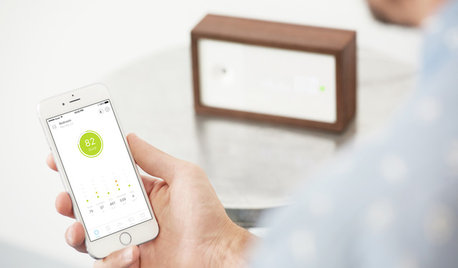
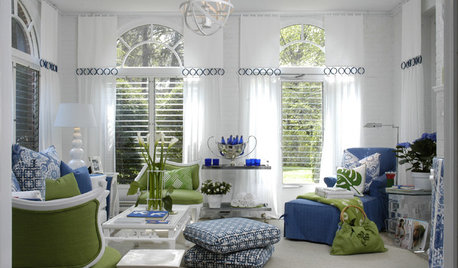
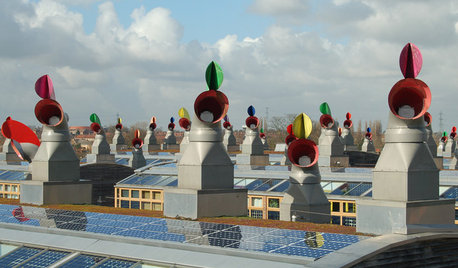
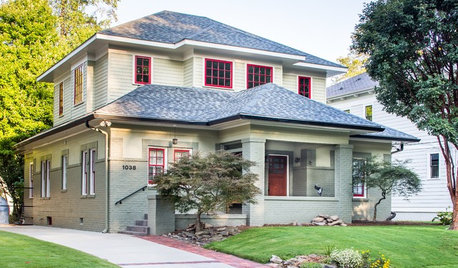



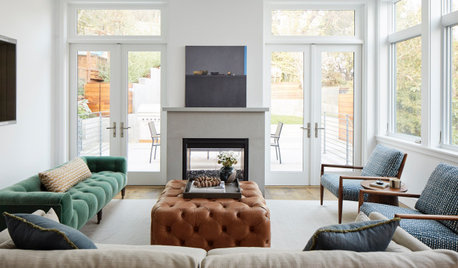
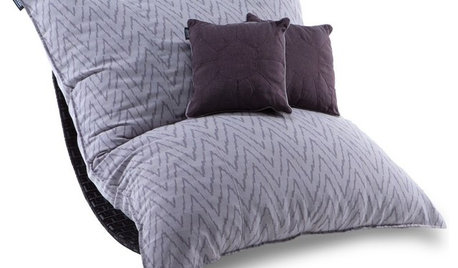





mike_home